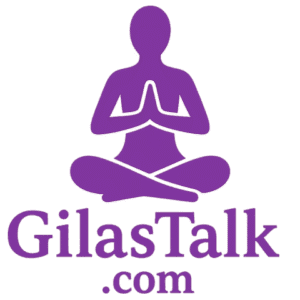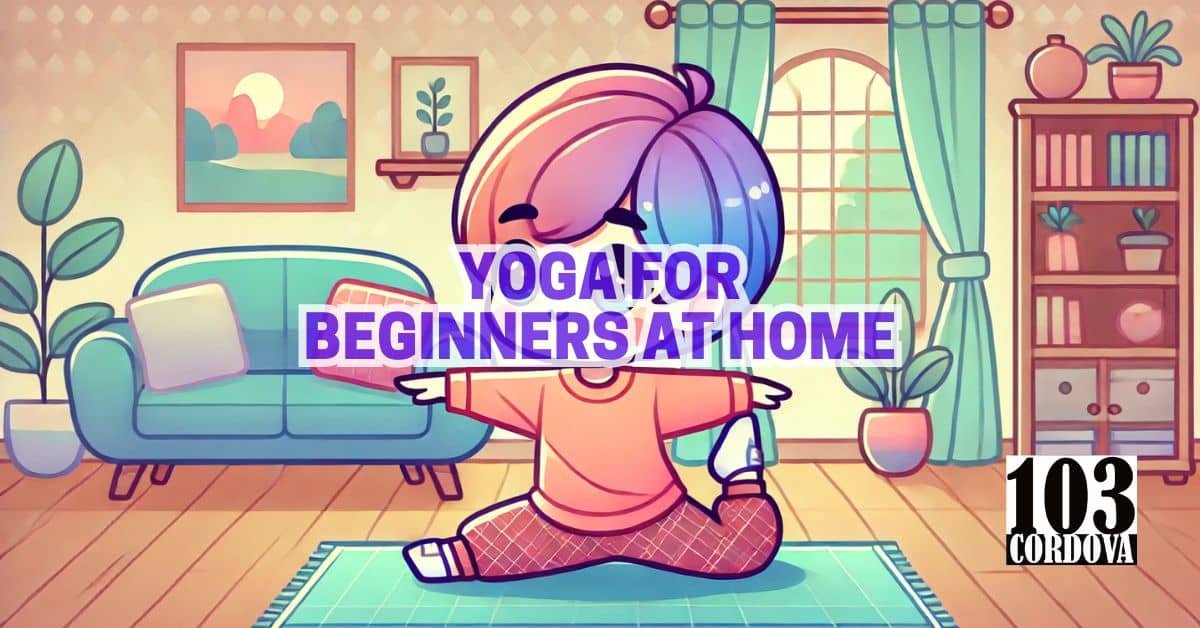Yoga is an excellent way to improve both physical and mental well-being, making it a great practice to start at home.
As a beginner, it’s easy to feel overwhelmed by the variety of poses and styles, but home practice allows you to move at your own pace.
However, practicing without proper guidance can lead to mistakes that might slow your progress or cause discomfort.
Understanding the common errors that beginners make can help you establish a strong and safe foundation.
We’ll cover key aspects of home yoga practice and highlight important pitfalls to avoid.
1. The Importance of Warming Up Before Practice
Warming up is essential for preparing your body for yoga, especially if you’re new to the practice.
Without a proper warm-up, your muscles and joints are more vulnerable to strain or injury.
Start with gentle movements like shoulder rolls, cat-cow stretches, or light twists to increase blood flow and loosen up.
These exercises get your muscles ready for deeper stretches and more complex poses.
Skipping the warm-up might make your body feel stiff and less flexible, reducing the benefits of your practice.
🧘 Why You Need Yoga Pants With Pockets in Your Wardrobe: The Ultimate Comfort
2. Avoiding Overextension: Know Your Limits
Many beginners tend to overextend themselves in yoga, trying to push their bodies beyond their current limits.
This often happens when you’re eager to achieve a specific pose or match what you see in videos, but it can lead to serious injury.
Overextension occurs when you force your body into a stretch or position it’s not yet ready for.
It’s crucial to respect your body’s boundaries and gradually increase flexibility and strength over time.
Always listen to your body—if something feels too intense, ease off and make adjustments to avoid overstraining.
🧘 Yoga Poses for Kids: How to Make Fitness Fun and Engaging
3. Maintaining Proper Alignment in Every Pose
Proper alignment is key to a safe and effective yoga practice, yet it’s often overlooked by beginners.
When your body is correctly aligned, the poses help build strength and flexibility without causing unnecessary strain on your joints or muscles.
Misalignment can result in discomfort, pain, or even long-term injury if not corrected early on.
You can use mirrors, video guidance, or beginner-friendly tutorials to check your alignment in poses like downward dog or warrior pose.
Paying attention to how your body feels in each position will help you adjust and improve your posture over time.
🧘 Benefits of Practicing Yoga on the Beach for Mind and Body
4. Breath Control: Synchronizing Breath with Movement
In yoga, breath control is just as important as the poses themselves.
For beginners, it’s common to hold your breath or forget to sync breathing with movement, which can reduce the effectiveness of the practice.
Deep, controlled breathing helps oxygenate your muscles and keeps your body relaxed, making each pose feel more natural.
A general rule is to inhale during upward or opening movements and exhale during downward or closing movements.
This coordination improves your flow and focus, helping you connect more deeply with your body as you practice.
🧘 Exploring the Benefits of Yoga Nidra for Sleep: Unlocking Restful Nights
5. Using Props for Better Support and Alignment
Yoga props like blocks, straps, and cushions can make a huge difference for beginners, but they are often ignored out of a desire to “do it on your own.”
Props allow you to maintain proper alignment and provide support in poses that may be too difficult initially.
For example, a block can help you reach the ground in forward bends without straining your back or legs.
Straps are excellent for improving flexibility in seated forward folds or shoulder stretches.
Using props doesn’t mean you’re weak; they help you grow stronger while preventing injury and frustration.
🧘 Yoga for Lower Back Pain: How Regular Practice Can Change Your Life
6. Choosing the Right Surface for Your Practice
The surface you practice on greatly impacts your comfort and stability.
Beginners often make the mistake of practicing on carpets or hard floors, which can cause slipping or discomfort during poses.
A quality yoga mat provides both grip and cushioning, giving you the balance you need for poses like downward dog or warrior.
Avoid mats that are too thin, as they won’t provide enough padding for your joints, or mats that are too thick, which might make balancing harder.
If you’re practicing on tile or hardwood, a good mat is even more important to prevent injuries.
🧘 Essential Yoga Poses for Beginners to Build a Strong Foundation
7. The Need for Consistency in Your Yoga Journey
Consistency is key when it comes to making progress in yoga, but many beginners practice sporadically and expect quick results.
Yoga requires dedication over time, and irregular practice can limit both physical and mental benefits.
Start by setting small, achievable goals, like practicing for 10-15 minutes daily or several times a week.
This consistency helps build strength, flexibility, and mindfulness over time, making each session more rewarding.
Even a short, regular practice is better than long sessions done inconsistently, so focus on showing up for yourself regularly.
🧘 Laughter Yoga for Weight Loss: A Fun and Effective Alternative to Traditional Workouts
8. Focusing on Your Journey: Avoiding Comparisons
A common mistake beginners make is comparing themselves to others, especially when following online classes or social media influencers.
It’s easy to feel discouraged if you can’t perform advanced poses or match someone else’s flexibility, but yoga is a personal journey.
Everyone’s body is different, and your progress may not look the same as someone else’s.
Instead of focusing on what others are doing, concentrate on your own growth and listen to what your body needs.
Remember, yoga is about self-awareness and improvement, not competing with others.
🧘 What Yoga Is Best for Weight Loss? Exploring Different Yoga Styles
9. Rest and Recovery: Listening to Your Body
Rest and recovery are essential parts of any yoga practice, especially for beginners.
Overloading your body with too much practice without adequate rest can lead to fatigue or injury.
Make sure to incorporate rest days into your routine, allowing your muscles to heal and strengthen.
Also, be mindful during practice—if a pose feels too intense or if you feel drained, it’s okay to pause or modify.
Giving your body time to recover ensures long-term benefits and keeps your practice sustainable and enjoyable.
🧘 Finding the Best Yoga Class for Weight Loss in Marikina
10. Recognizing and Responding to Discomfort or Pain
As a beginner, it’s important to differentiate between discomfort that comes from stretching and pain that signals injury.
Yoga can challenge your muscles and push your flexibility, but it should never cause sharp or intense pain.
If you experience pain in a pose, stop immediately and adjust or modify the position.
Ignoring pain or pushing through it can result in serious injury.
Always listen to your body and be patient—over time, your strength and flexibility will naturally improve without forcing anything.
🧘 Why Yoga Clothes for Women Are a Must-Have: Comfort Meets Style
💡 Conclusion
Practicing yoga at home as a beginner can be a deeply rewarding experience when done safely and mindfully.
Avoiding common mistakes like skipping warm-ups, overextending, or ignoring alignment helps you build a strong foundation for your practice.
As you continue, focus on consistency, listen to your body, and prioritize your individual progress without comparisons.
Using props, practicing on a good surface, and maintaining breath control will further enhance your experience.
With patience and dedication, your home yoga practice can become a lifelong journey of wellness and growth.
🧘 Our Services
Experience yoga classes for all ages at 103 Cordova Tower, Marquinton Residences, Marikina City, designed to help you achieve balance, strength, and relaxation.
Our classes cater to all skill levels, whether you’re a beginner or an experienced practitioner, in a welcoming and supportive environment.
Join us and enjoy personalized instruction that fits your needs and goals.
For more information, contact us via Facebook, our website’s contact form, or call 09176225780.
Start your journey to wellness with us today!

